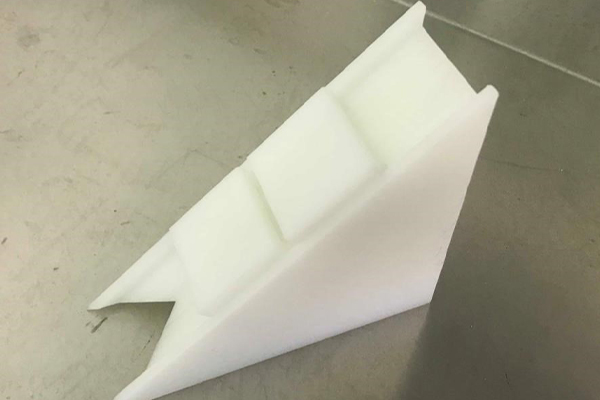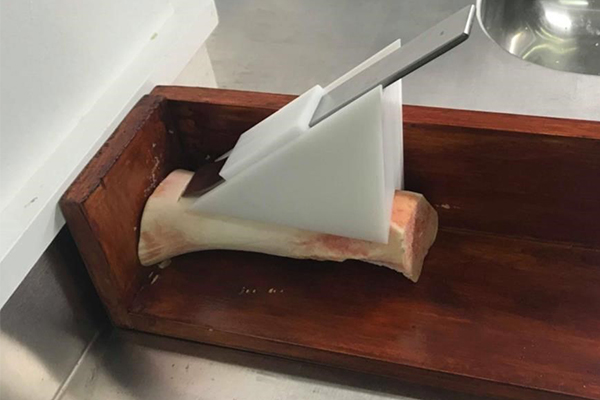Sharp tools reduce infection

Researchers at Auckland University of Technology’s BioDesign Lab and the University of Auckland's Department of Surgery have uncovered a link between the sharpness of surgical implements and the risk of post-surgery infection.
The study, published today in PLOS ONE, determines that keeping tools sharp is essential to avoiding cross-contamination.
“Bone surgeries are some of the most common surgeries, with approximately 9,000 hip replacements and more than 8,000 knee replacements happening in New Zealand every year,” says Lecturer Lorenzo Garcia. “Post-surgery infection not only reduces the patient’s quality of life; it also significantly increases healthcare costs. Reducing cross-contamination and possible infection will improve patient outcomes.”
The osteotome is a surgical tool commonly used to chip, cut, and sculpt bone during various surgical procedures such as orthopaedic, plastic, and dental surgeries. This tool resembles a chisel, beveled on both sides of the cutting edge and is like many bone-cutting surgical tools usually manufactured from either heat-treated Martensite, Austenite, or Martensitic Stainless Steel.

These materials allow surgical tools to withstand impact forces without fracturing. They also possess excellent properties of corrosion resistance, biocompatibility, and cost-effectiveness. Osteotomes are re-used in surgical procedures however lack of regular maintenance can lead to a dull or damaged cutting edge being used.
The research performed at AUT showed that dull osteotomes, used in surgical procedures including common operations like knee or hip replacements, retain bone contaminants even after sterilisation.
The BioDesign Lab’s study tested three different commercially available osteotomes with different surface coatings. After four cutting and sterilisation cycles, contaminants including calcium and phosphorous (evidence of bone contaminants), chromium, magnesium, silicon, aluminium, carbon, and nickel (base material of stainless steel) and traces of chlorine (used in autoclave sterilisation water) were found.

“Thanks to our commercial partner Sheffmed we were able to test a range of different commercially available osteotomes with different coating treatments, to measure what affect the different coatings had on reducing cross-contamination.
“Our testing detected bone contaminants in each osteotome,” says Dr Garcia. “However, the PVD (physical vapor deposition) coated osteotome demonstrated significantly less bone contamination than either the as-supplied or electroless nickel coated tool. According to the results, there is an association between blade sharpness and post-sterilisation bone contamination, so if hospitals can maintain sharp tools, it follows the risk of cross-contamination will be reduced. Or alternatively, the use of disposable osteotomes could be recommended.”